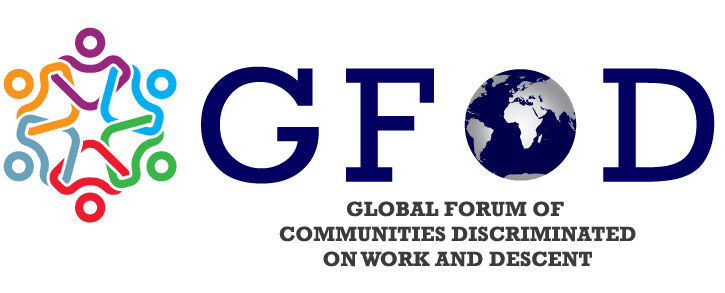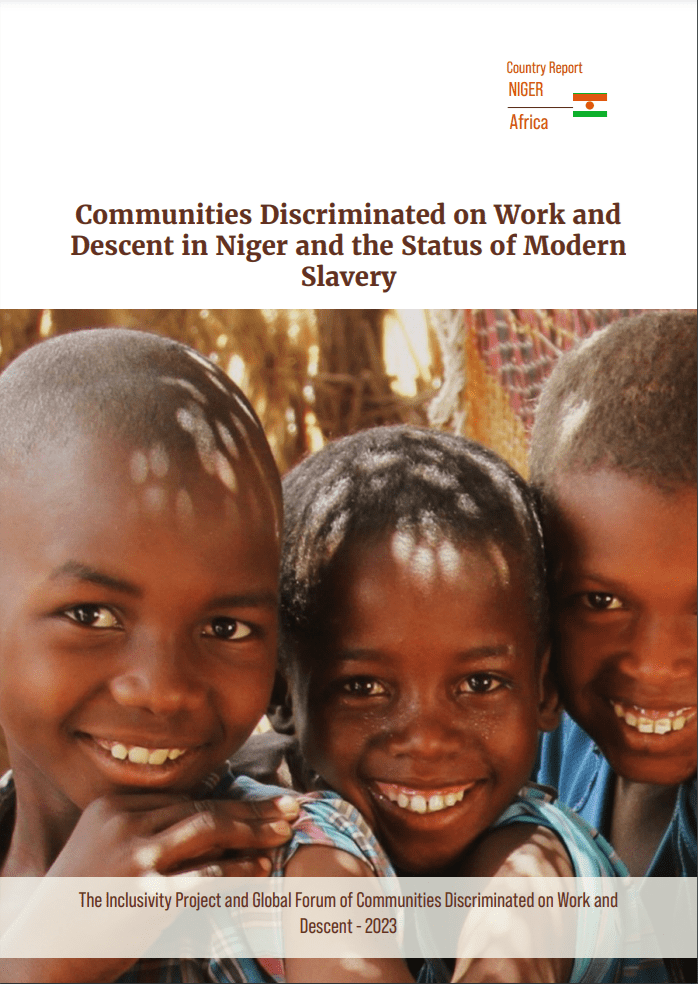Communities Discriminated on Work and Descent in Niger and the Status of Modern Slavery
The Inclusivity Project and the Global Forum of Communities Discriminated on Work and Descent will launch their “Communities Discriminated on Work and Descent in Niger and the Status of Modern Slavery” to help readers, researchers and policymakers understand the extent of discrimination faced by CDWD in Niger.
Niger, officially known as the Republic of Niger, is a Sahelian country in West Africa. The country comprises eight regions: Agadez, Diffa, Dosso, Maradi, Niamey, Tahoua, Tillabéry and Zinder. Its population is estimated at around 24.6 million and is one of the poorest nations in the world with an estimated 66% of its population living in multidimensional poverty.
Mentioning about the project, Dr Ramadan Alhamiss, Director General, Institut National de documentation, de recherche et d'animation pédagogique (National Institute of Documentation, Research and Educational Animation) said, “The aim of this research is to delve into the realities experienced by communities discriminated against on Work and Descent in Niger, and the persistence of this phenomenon. We are exploring the various factors and mechanisms that fuel this discrimination, while seeking solutions to mitigate these persistent inequalities. The investigation carried by the young experts is based on a multidisciplinary approach, integrating sociological, economic and cultural perspectives in order to provide a comprehensive understanding of this phenomenon. At the heart of societal and economic issues, the question of discrimination based on Work and Descent, historically rooted in the socio-cultural practices of the populations of Sahelian countries in general, and those of the Niger part of this geographical area in particular, remains a complex and crucial subject to tackle. In the context of Niger, a country with a rich cultural and ethnic diversity, the dynamics of discrimination in the professional world take various forms, often linked to considerations of descent, which handicap the lives of the victims in the long term.”
N Paul Divakar, Convener, Global Forum of Communities Discriminated on Work and Descent, pointed out that the report is not ‘merely an academic exercise but a call to action'. “This report aims to provide a comprehensive overview of the current situation, challenges faced, and potential avenues for intervention and improvement. It draws attention to the nuanced forms of discrimination experienced by these communities, recognizing the importance of understanding the historical context and cultural dynamics that contribute to their marginalization,” he said. “By presenting a holistic understanding of the challenges faced by these communities, we seek to inspire collaborative efforts that transcend boundaries, promoting a society where every individual can thrive irrespective of their descent or occupation,” he added.
Slavery in Niger has a deep-rooted history dating back to pre-colonial times and has persisted into the present day. Even before European colonisation, slavery was prevalent in Niger, primarily in the form of domestic servitude and forced labour. Enslaved people were considered property and commonly bought, sold, and passed down through generations.
“The dominant ethnic groups often held enslaved people from marginalised ethnic groups, and slavery was intricately linked to caste systems and social hierarchies. The caste system, a hierarchical social structure, has been present in some of Niger's traditional societies, notably among the Tuareg, Fulani, and Songhai ethnic groups. However, it is essential to recognise that Niger's society is highly diverse, comprising numerous ethnic groups such as Hausa, Zarma, Songhai, Dendi, Touaregs (Tamachek), Arabs, Fulfulde (Peulh), Kanuri, and Gourmantché. Consequently, the caste dynamics vary from one community to another,” the report pointed out.
In some Nigerien societies, castes were divided into distinct groups, each with specific societal roles and functions. These groups were generally determined by birth, and it was difficult for a person to change caste during their lifetime. Castes were often based on occupation and economic activities.
“For example, the Tuareg hierarchy comprised- Imajaghan (nobles), Ineslemen (warriors), Imrad (craftsmen), and Iklan (enslaved people), in this order. Each group had its own set of rights, obligations, and specific restrictions. Members of the slave caste were commonly regarded as inferior with limited rights. In the 19th century, Niger was affected by the trans-Saharan slave trade, which involved the capture, sale and transport of enslaved people across the Sahara desert to the Maghreb and Middle East regions. This led to an increase in the slave trade in the region, with caravans traversing Niger territory. The slave trade gradually ended with the advent of European colonisation and the subsequent abolition of slavery in many countries. Although slavery was officially abolished at the beginning of the 20th century across French colonies and globally, it remains prevalent in certain African countries, including Sudan, Mauritania, Niger, Mali, and Burkina Faso, among others. Following Niger's independence on August 3, 1960, the government took measures to officially abolish slavery and criminalise all forms of servitude in the country,” the report added.
Read the report in English below:



Congratulations..